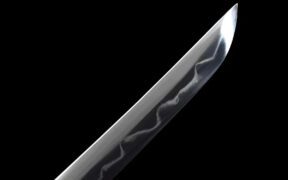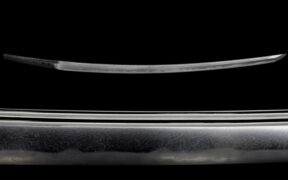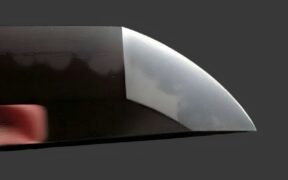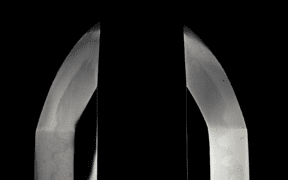What Is a Hamon on a Katana Sword?
NO AI USED This Article has been written and edited by our team with no help of the AI
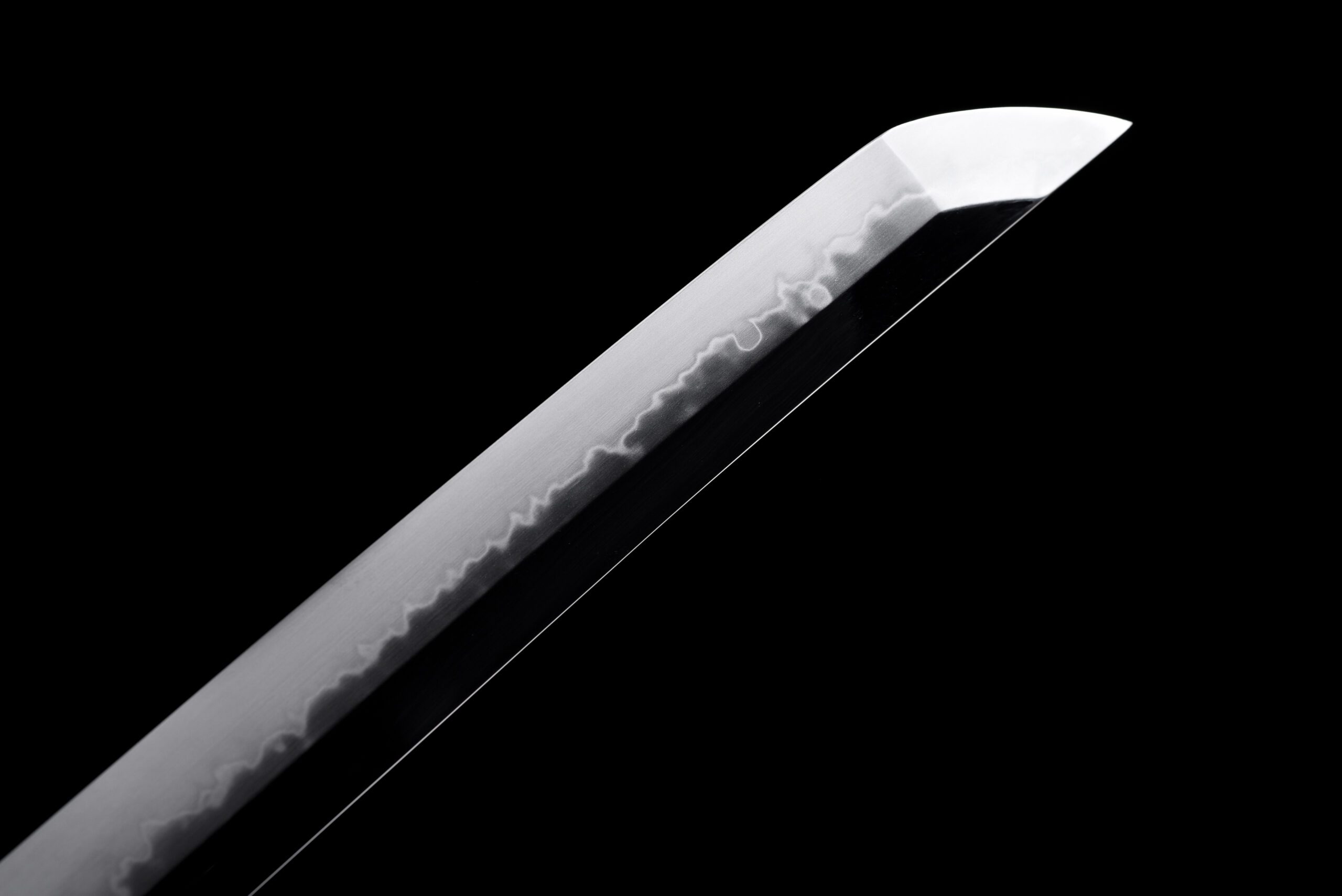
One of the most remarkable features of a Japanese blade is the hamon, the visible pattern of hardened steel along the cutting edge that enhances both its cutting ability and artistic appeal. It plays a crucial role in the blade’s overall quality and artistic value. However, understanding its complexity and function can be challenging for many.
In this article, we’ll explore the unique characteristics of a traditionally made Japanese hamon and how it contrasts with the etched versions found on replicas.
What Exactly Is a Hamon?
The Japanese term hamon (刃文) literally means blade pattern. A swordsmith hardens the steel at the cutting edge when a Katana is made. This unique hardening process creates a wavy line called hamon. It indicates that the cutting edge has been hardened far greater than the rest of the blade, making it suitable for effective cutting.
A traditionally-made Japanese sword must always have a hamon. A properly designed hamon limits the damage the cutting edge suffers during use. It also has an artistic value and a skilled swordsmith can produce a wide variety of hamon patterns such as a series of arcs, clouds, waves, zigzags, or anything in between.
What Is An Etched Hamon?
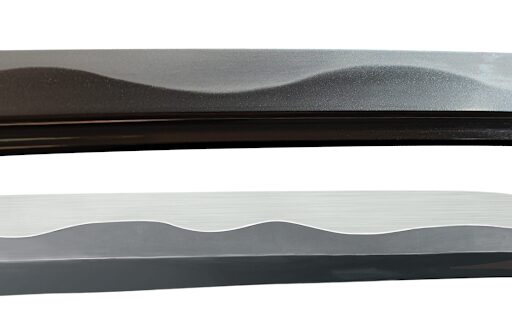
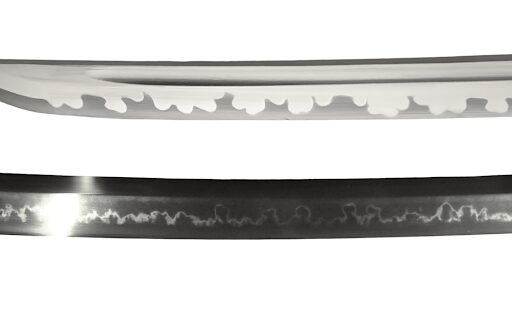
Difference between clay-tempered (up) and etched hamon (down)
An etched hamon on replicas of Japanese swords is a pattern artificially created using acid or other chemicals along with selective etching and polishing techniques to mimic the hamon on traditionally made Japanese blades. Many factory-produced blades feature an etched hamon to make the piece more attractive to potential buyers.
However, unlike the traditionally made Japanese hamon, which forms naturally through the blade’s heat treatment, an etched hamon is applied artificially after production. As a result, it is only surface-level and does not contribute to the sword’s cutting ability. Additionally, an etched hamon lacks the depth and authenticity of traditional patterns.
Distinguishing Features of a Traditionally Made Japanese Hamon
A hamon generally contrasts in color with the body of the blade, revealing many fine details upon close examination. Let’s delve into the unique features of a hamon, the terminologies used to describe it, and how experts distinguish a good hamon.
Structure and Composition
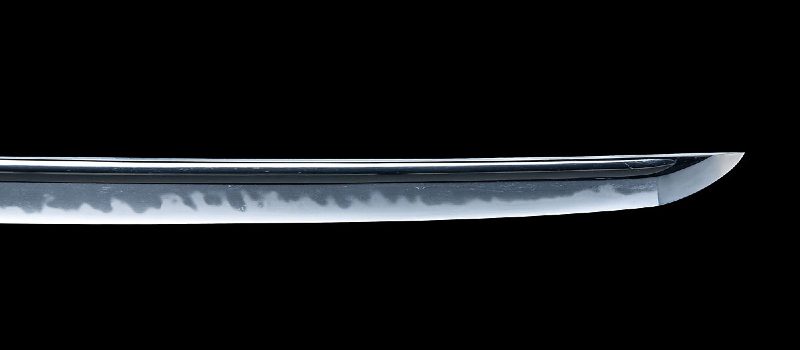
The primary function of a hamon is to create a blade with a very hard cutting edge on a tougher body.
Therefore, Japanese swordsmiths developed techniques for hardening only the cutting edge as it retains its sharpness better while leaving the body more flexible as a hardened body can be too brittle.
When a Japanese sword is heat-treated to harden the edge, it produces a hamon, a visible boundary line between the hardened steel in the edge area and the softer blade’s body.
Appearance of the Hamon
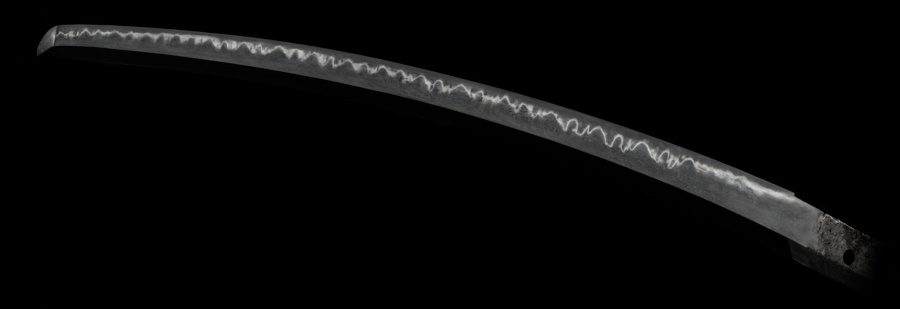
A hamon generally has a whitish or grayish color. In proper lighting conditions, a hamon may light up brightly. It does not have just a simple shape but also contains complex patterns and details. These include the nioi and nie, habuchi, ashi, and boshi, to name a few.
Nioi (Fine Particles)
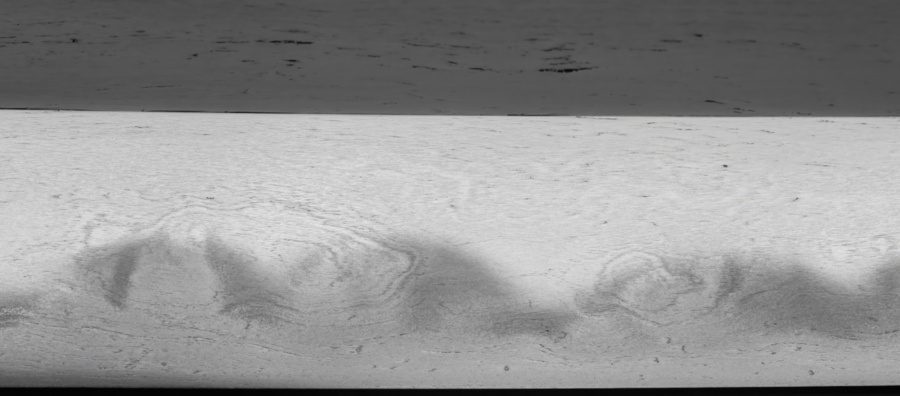
Nioi describes the misty appearance of the heat treatment at the blade’s hamon, which consists of martensite crystals too small to be seen individually. Nioi often resembles diamond powder sparkling in the hamon, with no distinct dots or large crystal particles visible. All Japanese swords exhibit nioi along the hamon.
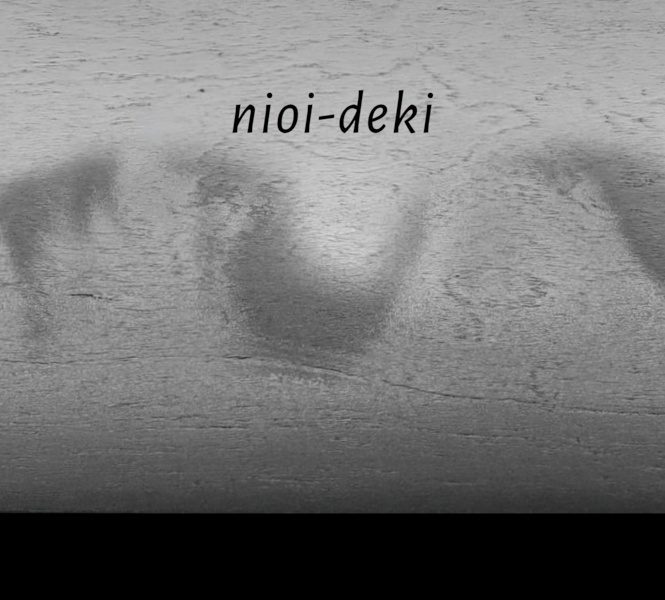
The term nioi (匂) means fragrance. When the hamon shows nioi throughout—with little or without separate dots or particles (nie)—it is called nioi deki. The term deki simply means workmanship or interpretation.
Nie (Large Crystals)
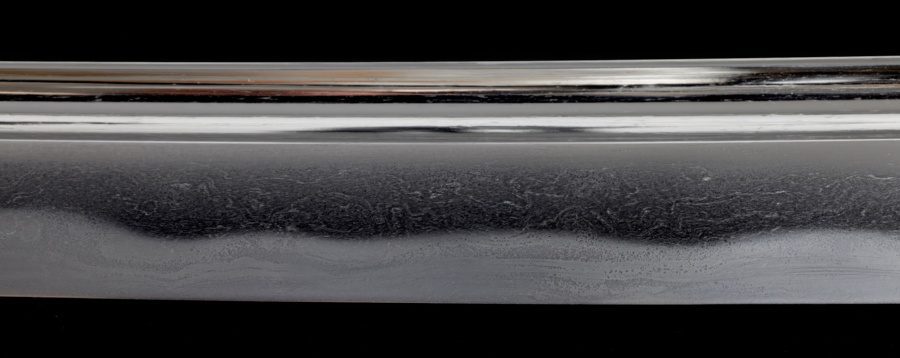
The nie refers to the single, large martensite crystals that appear as separate dots or islands. It is mostly seen along the hamon or above it. Very large nie particles are called ara-nie, while very small dots are called ko-nie.
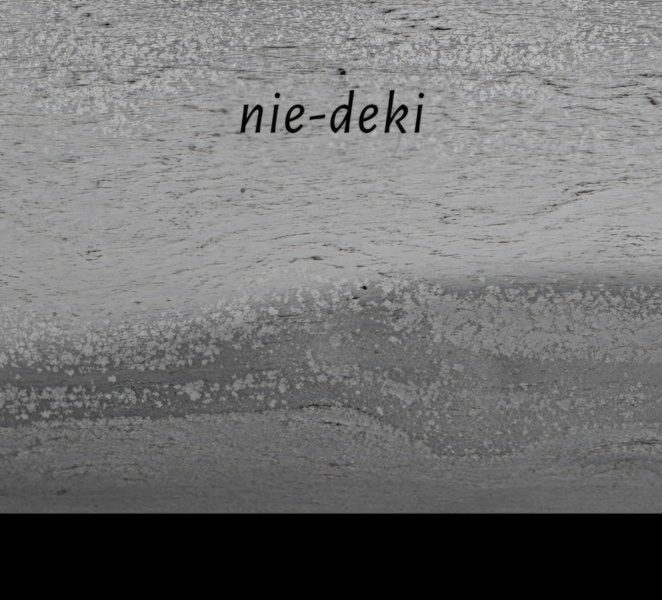
The term nie (沸) means boil, a reference to its appearance of looking like bubbles of boiling water rising to the surface. The term nie-deki means that the hamon features visible grainy nie particles. However, the presence of nie is more associated with the swordmaking tradition, such as the Sōshū school, rather than quality.
Habuchi (Border of the Hamon)
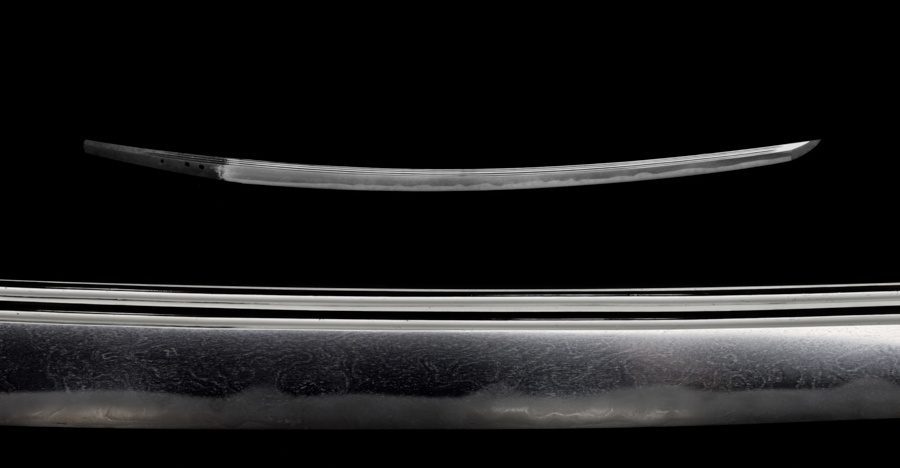
The habuchi is the border of the hamon—the region where the hardened edge and the body of the blade meets. The habuchi is sometimes called nioiguchi, as the nioi is always present at the border of a hamon.
A good hamon will always have a bright, clear border (habuchi) that sets it off against the blade’s body. The boundary line should have no gaps, breaks, or unnatural width and brightness. It must be present throughout the blade, without weak or faded areas.
Ashi (Extending Lines)
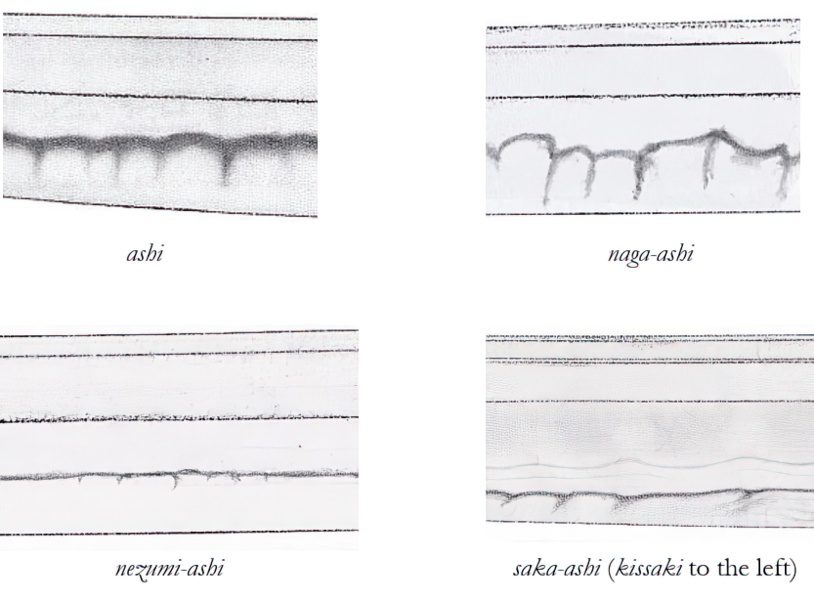
A hamon often has thin lines extending towards the cutting edge. These extensions or projections are called ashi (足). As long as they are present, and the hamon itself is unbroken, any hamon pattern will be equally effective for a good sword.
In his in-depth discussion of the hamon, Markus Sesko, an expert in Japanese arms and armor, notes that ashi were initially introduced to straight hamon patterns to limit the maximum size of a chip along the cutting edge.
Boshi (Hamon of the Point)
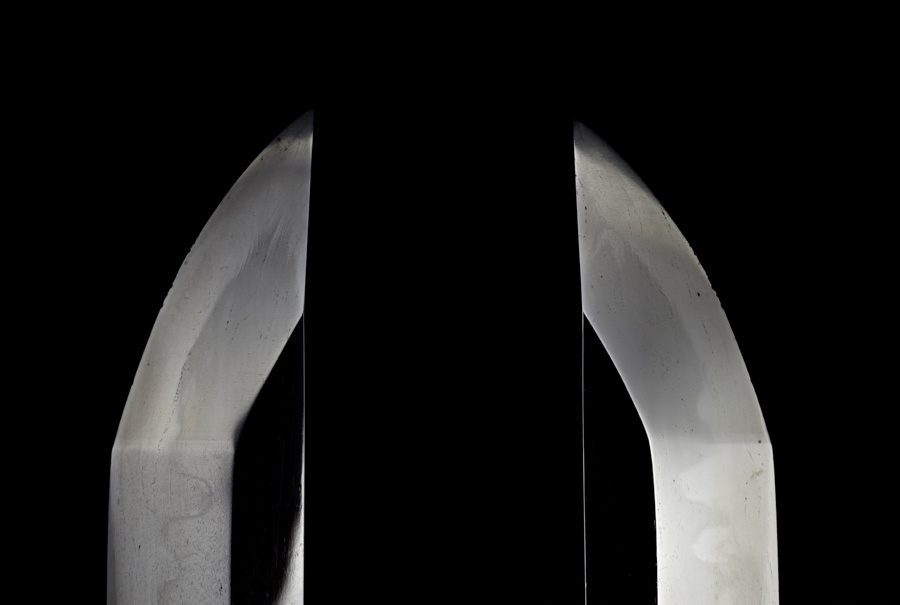
A hamon should be present along the entire length of the blade, including the point. The hamon of the point (kissaki) is called boshi, meaning hat. The boshi has various shapes and patterns. Generally, it should be very clear, and the kissaki should have a uniform white appearance.
